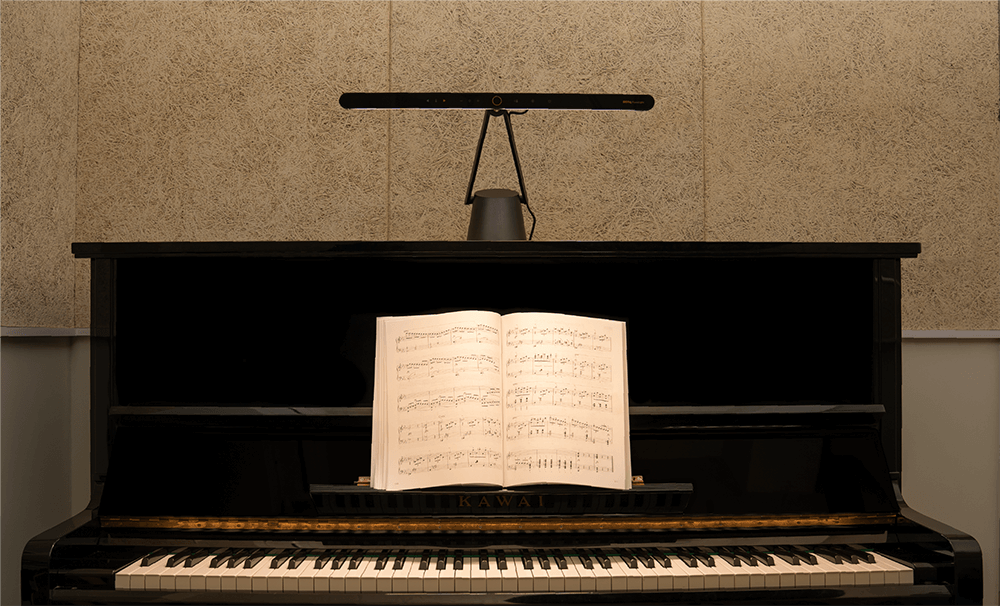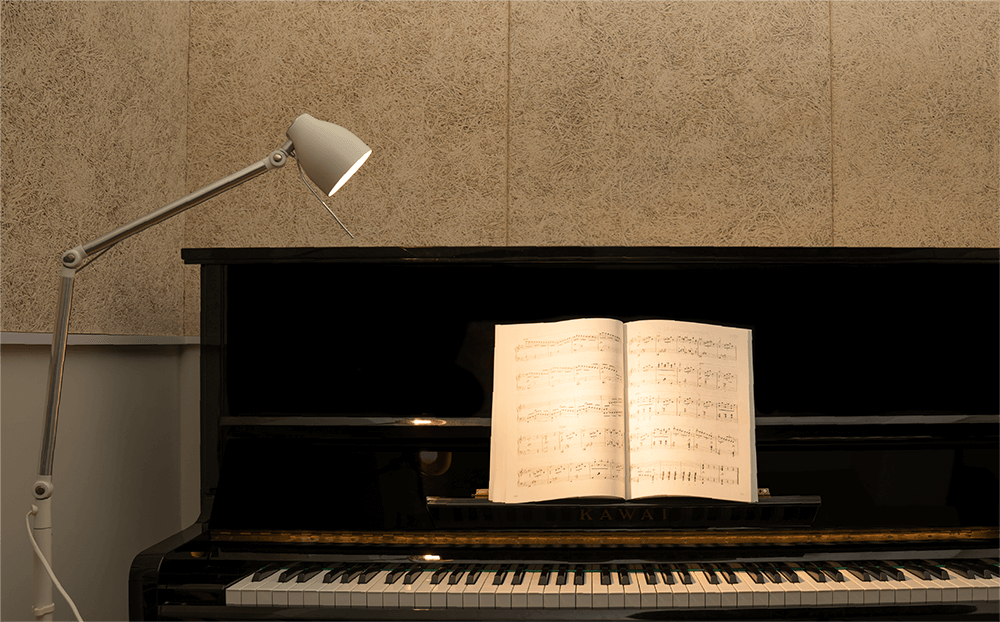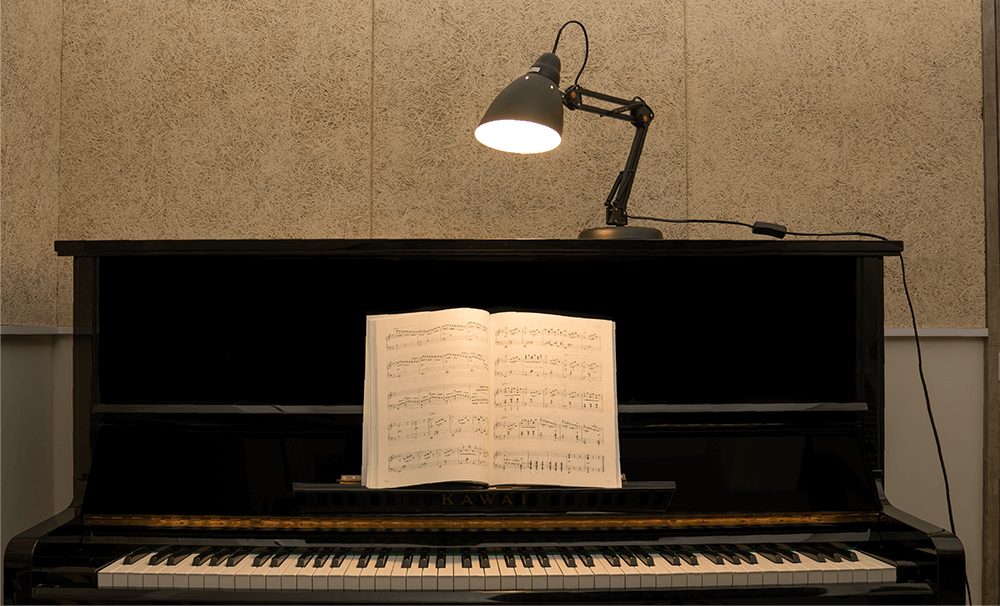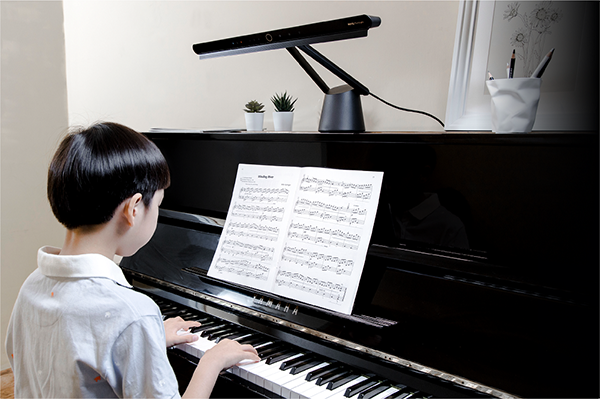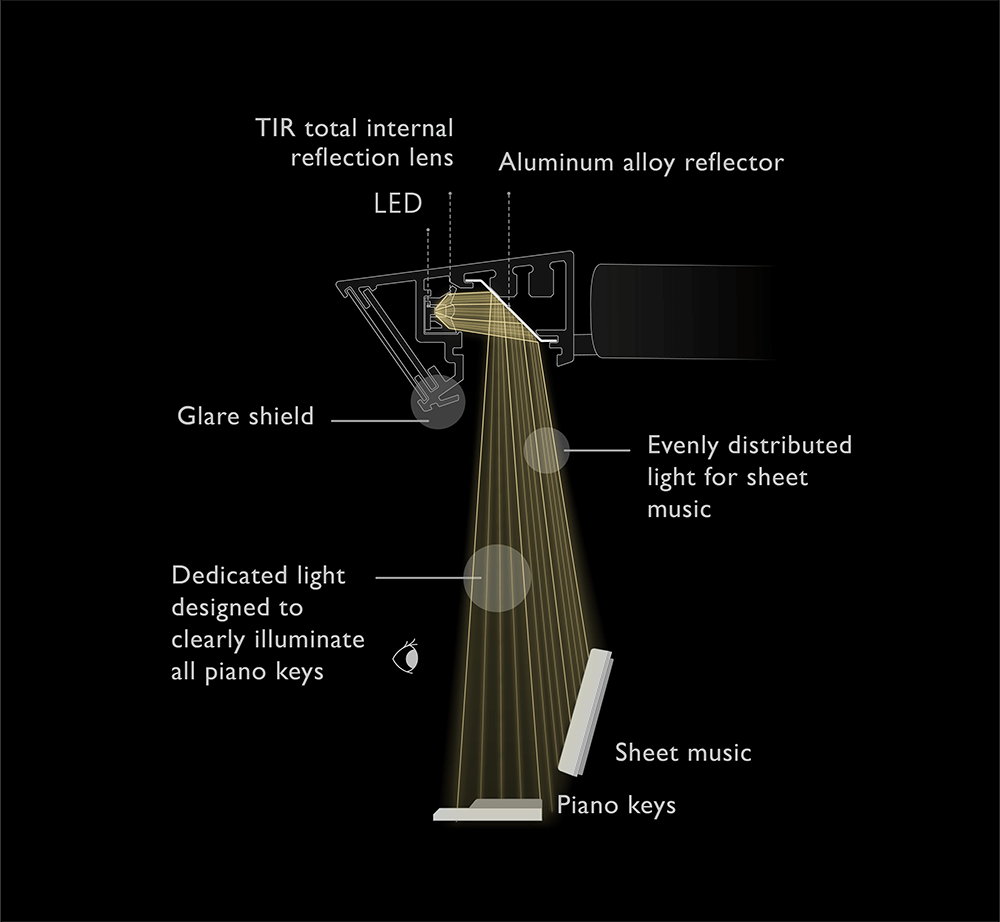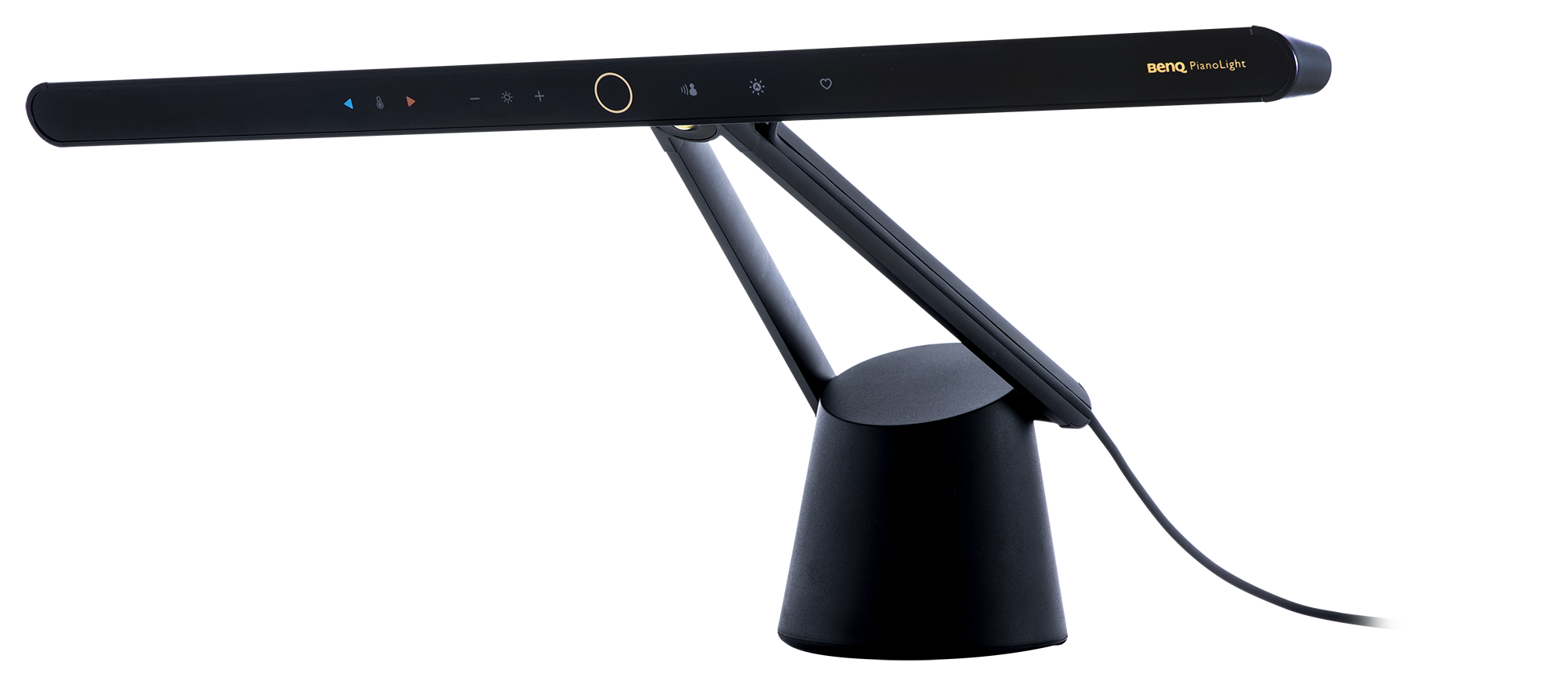According to scientific research, warm yellow light (cooler than 3000 kelvin) is relaxing while bright white with high color temperatures keeps people focused, if a little on edge. Therefore, when practicing piano before a competition or performance, a piano lamp can be adjusted to bright white to improve efficiency. Or simply turn the lamp to romantic warm yellow when you want to create a relaxing atmosphere or hold a small concert in your living room. In the past, lamps only provided one color temperature, bright white or warm yellow, but modern piano lamps like the LED PianoLight allow you to adjust color temperature and brightness according to your mood or desired atmosphere. They can even automatically detect surroundings to complement ambient light.

